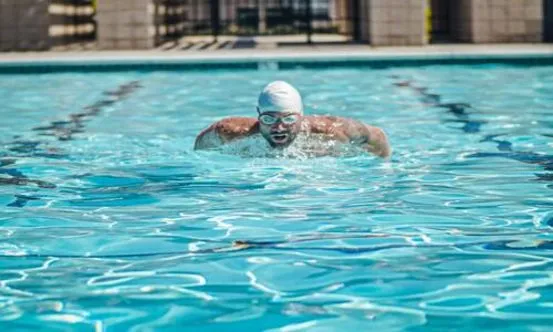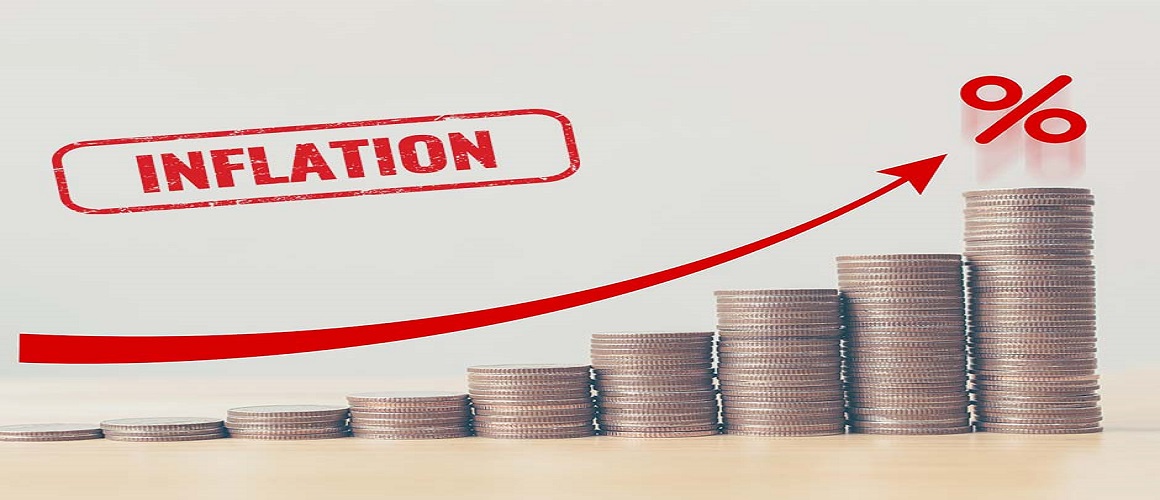Swimwear thriving: How is the industry witnessing a revenue of US $20 billion and a growth of 5.1% post pandemic?
by Vishal
25/05/2022 6 min read

The global market for Swimwear and Beachwear, which was anticipated to be worth US $19.5 billion in 2020, is expected to expand to US$27.6 billion by 2027, with a CAGR of 5.1% between 2020 and 2027. Polyester which is one of the highest contributors of raw materials to Swimwear and Beachwear is expected to grow at a 5.9% CAGR over the next five years, reaching US$10.1 billion along with Spandex which is predicted to increase at a CAGR of 5% over the next seven years.
Infact, in the year 2020, the swimwear and beachwear industry in the United States was estimated to be worth US$5.3 billion. China, the world's second biggest economy, is expected to reach a market size of US$5.7 billion by 2027, with a CAGR of 7.9% from 2020 to 2027. Japan and Canada are two more important geographic markets, with forecasted growth rates of 2.7% and 4.6%, respectively, from 2020 to 2027. Germany is also expected to expand at a CAGR of around 3.1% in Europe.
The questions is- why has there been a sudden surge in the demand for Swimwear despite the recent pandemic?
According to Skyquest, there are multiple reasons for it:
1. The growing importance of sports activities, particularly for health reasons, as well as the growing number of international sporting events, are pushing consumers to participate in sports and leisure activities
2. The rise in the number of individuals participating in fitness and water sports has given players the chance to present attractive and comfortable swimwear ideal for regular water sports activity. Swimming as a workout plan is becoming increasingly popular due to the numerous advantages linked with it
3. Increased consumer interest in swimming and an increase in the number of family trips to the beach have been raising demand for swimwear, moving the industry forward
4. Furthermore, factors such as the rise in female demand for luxury swimwear, the expansion of public or private swimming pools and clubs, and the high penetration and acceptance rates of ecommerce platforms all are contributing to the market's growth
As analysed by the above points, with the increase in swimming as an activity, hobby or sport comes the rise of swimwear. Currently swimwear by known sports brand rule the swimwear market.
In 2022, the Sports & Swimwear segment is anticipated to generate US $88,693 million in revenue. The market is expected to grow by 5.32% per year (CAGR 2022-2026). By 2026, volume in the Sports & Swimwear segment is expected to reach US $3,951.74 million pieces. In 2023, the Sports & Swimwear segment is expected to grow by 5.4% in terms of volume. In 2022, the average volume per person in the Sports & Swimwear segment is predicted to be 0.45 pieces.
Why China might be the highest contributor and winner in the Swimwear market?
During the projected period, the Asia-Pacific region is predicted to increase at a faster rate than the other regions. Fast-growing economies, such as India and China, have a lot of promise in terms of swimsuit consumption.
The Chinese swimwear market, for example, is driven by the country's large population, which is discovering a passion for water sports and considers swimming to be the finest form of physical activity in China, resulting in high demand for swimwear items.
As a result, most domestic and international manufacturers are focused on practical indoor swimming designs while also paying more attention to performance, comfort, design, and style.
The market value of swimwear is also rising as government and non-profit organisations increase their spending in the creation and upkeep of swimming pools.
Also, Swimwear markets in developed nations such as the United States, Germany, the United Kingdom, Japan, and Australia are reasonably well-developed, with product innovation continuing to be a primary driver. The widespread use of swimwear is aided by the abundance of swimming pools and water parks in most Western nations.
What is the trendiest type of Swimwear and how is the market adapting to the change in demand?
The point to note here, is that slowly, new incumbents are entering this lucrative market and Swimwear is slowly turning into one of the biggest investable opportunities with total addressable market slowly gaining its original pace back to the levels before the pandemic.
One important point to note is that, due to rapid changes in fashion trends and an increase in consumer disposable income, a boost in industry demand of luxury swimwear is highly anticipated, leading to the purchase of various types of swimwear goods depending on comfort, activities, and fashion appeal.
The style and acceptability of bathing attire have shifted dramatically during the last several decades aiding in the growth of swimwear sales across the globe. Companies have lifted the bar on innovation in the recent decade, from high tenacity multi-coloured yarns to UV-protection swimsuits.
Luxury swimwear, known to enhance the slimming effect and includes value-added features like handy cuts and stylish prints, is currently gaining tremendous appeal among both males and females from all over the world. A luxury swimsuit can range in price from $100 to $400, or even more.
One of the examples under this could be Speedo's compression suit, which improves a swimmer's performance, opened the path for subsequent breakthroughs. Fabrics that are resistant to chlorine, sand, and sun bleaching are gaining popularity across the world. Swimwear that dries quickly, breathes well and holds its form has become a favourite option among shoppers.

To Know More About This Report,Click Here
Men’s or Women’s swimwear- Which segment has the highest returns?
The total swimsuit industry has improved dramatically because of the rising demand for high-performance swimwear.
According to SkyQuest Review of Swimwear and Beach Wear, the worldwide swimwear industry is predicted to reach US$ 30 billion by 2028 from US$ 20 billion in 2020. While Europe and North America dominate swimsuit sales, extraordinary expansion in the Asia Pacific area is propelling the swimwear sector forward.
During the forecast period of 2021-2026, the swimsuit market is expected to grow at a CAGR of 6.3%. With shifting fashion trends, essential elements such as design, style, and fabric comfort all play a significant part, this market is going to grow further up.
As a result, there is a growing need for branded swimwear that is both high-quality and chlorine-resistant. With a revenue share of 31.5% in 2020, Europe dominated the worldwide swimwear market, and it is expected to continue to do so throughout the forecast period.
In 2020, Europe brought in the US $6.47 billion in sales, followed by the US $5.73 billion from North America and the US $5.09 billion from the Asia Pacific. However, due to emerging nations such as China and India, Asia Pacific is expected to be the fastest-growing region when it comes to adaptability and swimwear purchase.

In terms of gender, the men's swimwear industry is also growing, even though women's swimwear continues to account for 75% of the entire market. While women's swimsuit sales increased by 6% in the United States of America, men's swimwear sales increased by 13%. Currently, about 34.88 % of brands cater to the men's swimwear market, while 41.86 % of firms have moved into the children's swimwear segment.
Polyester or Spandex, which raw material is preferred by the manufacturers?
As per 2020, Polyester had the highest market share in terms of production for Swimwear which 33.5% of Us $20.5 billion market. According to our research, Polyester is used to make a variety of swimwear that is resistant to stretching and shrinkage. Manufacturers are also drawn to this material because of its quick drying and easy-to-clean properties.
Furthermore, it improves the durability of swimwear by providing benefits like as wrinkle resistance, abrasion resistance, and chemical resistance. As a result, the use of innovative textiles in swimwear production is expected to drive global market growth.
Followed by Polyester, is Spandex with 25.1% market share of US $20.5 billion market. Soft and light spandex increases the stretchiness of a swimsuit as part of a material blend; the more spandex in the suit, the more shape-hugging it is. As a result, it's an important part of competitive swimwear, therefore one of the most preferred raw materials for the Sports-Swimwear industry.

Who are the major competitors and what is their strategy to step up their game?
The swimsuit market is extremely competitive on a worldwide scale. In order to achieve a competitive edge, the major players in the swimsuit market are distinguishing their product releases in terms of the material utilised, price, range, and size.
With various collaborations, product breakthroughs, and expansions, Pentland Group PLC (Speedo International Limited) is one of the most active corporations in the industry. With the growing number of brand-conscious customers throughout the world, big businesses are producing sustainable swimwear made from recycled materials as a strategy to attract their attention.
Pentland Group PLC, Swimsuit Anywhere Inc., Adidas AG, Puma SE, and LVMH Mot Hennessy Louis Vuitton are currently among the other important players in the worldwide swimwear industry.
Which type of Swimwear is the best for investment?
In 2022, the Sports & Swimwear segment will generate US$88.69 billion in revenue. The market is predicted to increase at a rate of 5.31% each year.
By 2026, volume in the Sports & Swimwear market is estimated to reach US $3,951.74 million units. In 2023, the Sports & Swimwear market is predicted to rise by 5.4% in volume.
On the other hand, luxury swimwear is increasingly becoming popular among middle-aged and older men and women since it is composed of speciality fabrics that support their bodies while still providing the comfort they want.
Also, to develop new products, strategic collaborations with customers are expected to be a vital success component in the next coming years. Given all of these aforementioned considerations, producers are likely to place a premium on product innovation, especially for women's premium swimwear.
So, to gain the most market share, leading corporations are expanding their geographical footprint and trying to decode which type of market is the best for their business, given the raw material, other costs and maximum return on investment.
For example, as of October 2021, Kim Kardashian West launched a new shapewear and lingerie line. The TV personality and inventor of Skims teamed up with Fendi, an Italian design brand, to create a one-of-a-kind collection. Swimsuits, form-fitting dresses, and tops are included in the forthcoming SKIMs x Fendi ready-to-wear collection, with prices starting at US $950.
Along with this, at Paris Fashion Week in October 2021, Chanel Group debuted their '90s-inspired spring/summer 2022 collection, which included swimsuits, high hemlines, and navel-baring outfits.
Players, stakeholders, and other market participants in the global Swimwear market will get a competitive advantage by utilising the study as a valuable resource. So, let’s deep dive in
SkyQuest provides market insights that fuel your growth. Our insights are a base for you to innovate and understand the needs of your consumers. Reach your goals with data that will give you deep-rooted insights into your industry.





















 USA (+1) 351-333-4748
USA (+1) 351-333-4748
